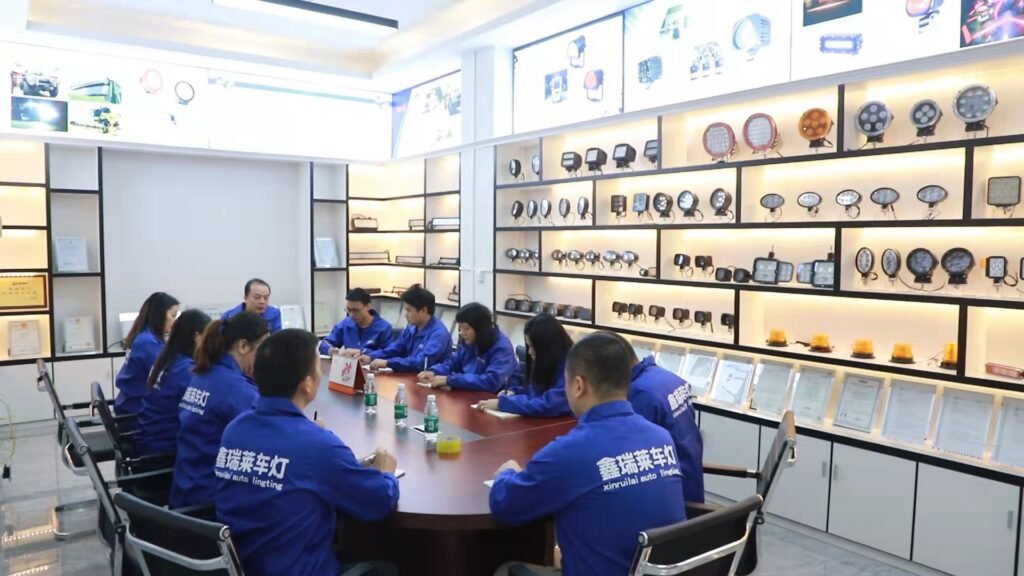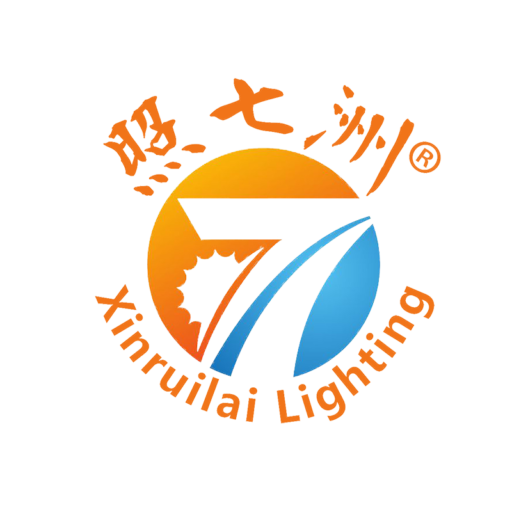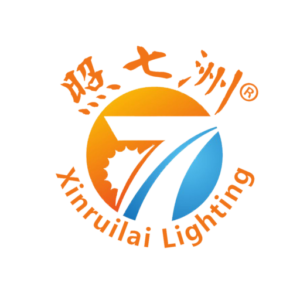Forklift Blue Light: Enhancing Safety and Compliance
- bestautolamp.com
Table of Contents
Forklifts are essential machines in warehouses and industrial settings, but their operation can pose risks to pedestrians and other workers. One key feature improving forklift safety is the blue light on forklift, which serves as a warning signal to alert nearby workers of a forklift’s presence. This article explores the purpose, installation, use, and maintenance of forklift blue safety lights, as well as the relevant laws and regulations governing their use.
1. What is the Use of the Blue Light on a Forklift?
The forklift blue spot warning light is a safety feature designed to increase visibility and reduce accidents in busy warehouse environments. It projects a bright blue light onto the floor or ground around the forklift. The blue light serves several critical functions:
Increased Visibility: The blue light helps workers and pedestrians identify the location of a forklift, especially in areas with heavy machinery or limited visibility.
Warning Signal: It acts as a visible warning that a forklift is in operation, alerting individuals to stay clear or avoid the forklift’s path.
Accident Prevention: By making the forklift more noticeable, the blue light reduces the risk of collisions and enhances overall safety in high-traffic areas.
Blue lights are particularly effective because they are distinct and easily noticed, even in crowded or noisy environments, unlike the traditional white or amber lights commonly used in other machinery.
2. How to Install a Safety Light on a Forklift?
Installing a blue light for forklift involves a few simple steps to ensure proper functioning. Here’s how to install one:
Step-by-Step Installation Process:
Choose the Right Blue Light: Select a blue forklift lights that matches the specifications of your forklift and meets regulatory requirements.
Locate the Mounting Position: Common mounting positions include the rear or front of the forklift, as well as the sides. The goal is to ensure that the light projects onto the ground where pedestrians and other workers can easily see it.
Secure the Light: Use mounting brackets or adhesive to secure the light in place. Ensure the light is firmly attached to prevent vibrations from loosening it during operation.
Connect the Wiring: Attach the blue light’s wiring to the forklift’s electrical system. It’s important to connect the light to the ignition switch so that it activates when the forklift is running.
Test the Light: Once the light is installed, test it to ensure it projects clearly onto the ground and that all electrical connections are secure.
By following these steps, you can ensure that the forklift blue light is properly installed and functioning to improve safety.
3. How Does a Forklift Operator Use It?
The primary purpose of the forklift safety lights blue is to serve as a safety feature, but it’s up to the forklift operator to ensure it’s used correctly. Here’s how operators can make the most of this safety tool:
Turn on the Light When Operating: The blue light should be activated every time the forklift is in motion. This helps warn pedestrians and workers to remain alert and stay clear of the forklift’s path.
Adjust the Light’s Angle: If the light is adjustable, ensure it is directed to the appropriate area. The light should cover the ground clearly, illuminating the path ahead or behind the forklift without obstructing the operator’s view.
Keep the Light Clean: A dirty lens can reduce the effectiveness of the blue light. Regularly clean the lens to ensure it remains visible and bright.
Check for Functionality: Periodically check that the light is working, especially before each shift, to prevent malfunction during operation.
By understanding how to use the forklift blue warning light effectively, operators can contribute to a safer work environment.
4. Laws and Regulations Regarding Forklift Blue Lights
There are certain laws and regulations that govern the use of forklift blue light safety to ensure safety and compliance. These regulations can vary by country and region, but some common standards include:
Occupational Safety and Health Administration (OSHA): In many regions, OSHA standards mandate that employers take appropriate measures to protect workers from forklift-related accidents. This includes using warning lights like blue lights to enhance safety.
Visibility Standards: Many regulations require forklift lights to meet specific visibility standards, ensuring that the blue light can be seen from a certain distance (often several meters).
Workplace Safety Compliance: Employers should ensure that forklift safety features, including blue lights, comply with workplace safety guidelines to avoid potential penalties.
Before installing forklift backup blue light, it’s important to check local regulations to ensure that the lights meet the necessary legal requirements.
5. How to Check the Function of a Forklift Blue Light
Regular maintenance is crucial to ensure that the blue light safety forklift continues to function as intended. Here’s how to check its performance:
5.1 Regular Inspection
Make it a habit to inspect the blue warning lights on forklifts during routine maintenance checks. Look for any signs of damage, wear, or malfunction. It’s also a good time to ensure that the wiring is intact and free from fraying or corrosion.
5.2 Testing the Light
To test the blue spot light for forklift, turn on the forklift and check that the light projects a clearly visible blue beam onto the ground. Ensure it illuminates the area around the forklift and is visible from a distance.
5.3 Cleaning
Dirt, dust, and grime can accumulate on the lens of the blue light, reducing its effectiveness. Regularly clean the lens using a soft cloth and a mild detergent to remove any buildup. Be sure not to use abrasive materials that could scratch the lens.
5.4 Positioning
Check the light’s positioning periodically to ensure it still projects the blue beam in the right direction. If necessary, adjust the angle or reattach the light to ensure optimal visibility.
5.5 Battery Check
Since some blue led forklift safety light is powered by the forklift’s battery, it’s important to check the battery’s health regularly. If the light dims or fails to turn on, it could be a sign of a battery issue or a problem with the electrical connections.
6. Minimum Working Standards for Blue Light
To ensure the blue light forklift performs effectively, it must meet certain minimum standards:
6.1 Visibility
A blue light should be clearly visible from a distance of at least 3 to 5 meters. This ensures that workers and pedestrians can see the forklift from far enough away to react appropriately.
6.2 Brightness
The brightness of the blue forklift safety light is another important factor. It should be bright enough to stand out in a busy environment but not so intense that it causes discomfort or distraction to the forklift operator or nearby workers.
6.3 Durability
Safety blue light forklift must be durable enough to withstand the harsh conditions of a warehouse or industrial environment. The light should be resistant to shock, vibration, and moisture to function properly in all weather conditions.
6.4 Compliance
Lastly, the blue light forklift safety should comply with local safety regulations and industry standards. This includes proper installation, maintenance, and use according to established guidelines to ensure workplace safety and avoid legal issues.
7. Conclusion
The forklift blue light is an essential safety feature that enhances visibility and prevents accidents in busy environments like warehouses and factories. By understanding its purpose, installation, proper use, and maintenance, both operators and employers can ensure that their forklifts remain compliant with safety regulations and continue to provide a safer working environment for everyone. Regular inspections, cleaning, and testing will keep the lights functioning properly, reducing the risk of accidents and improving overall workplace safety.
Share the Post:

Focusing on customized solutions and customer service, we have excellent sales, engineering and production teams, which can bring you efficient and high-quality docking.
We look forward to hearing from you!




